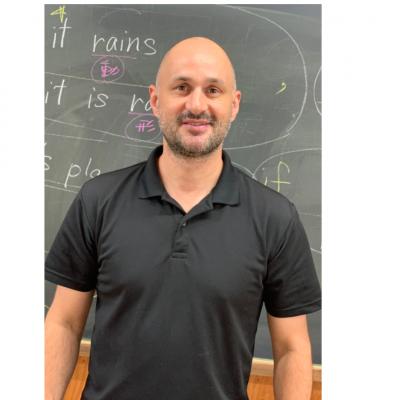Luc Roberge
Kyushu Bunka Gakuen Elementary and Junior High School
After 14 years of teaching mostly at the university level in Japan, in 2018 I transitioned to an administrative position at a newly established private elementary and junior high school. I am now working with a great team to design, establish and develop an English program from Grade 1 to Grade 9 that that harnesses the power ICT tools to help build the skills, knowledge, habits and attitudes students will need for a quickly changing world. So far, this endeavor has been daunting and exciting.

Sessions
Blended-Learning: Helping teachers use technology
Blended-Learning is an increasingly popular approach in education that blends the traditional face-to-face classroom with ICT-mediated coursework, independent of the teacher. Blended-learning, by careful design, can help to address challenges associated with language classrooms populated with students with varying language knowledge, skills, experience, learning goals, motivation to learn etc. Blended-learning can be used to foster an environment where students have more flexibility and autonomy over the learning process, such as more control of the pace of learning. In traditional teacher-centered lessons, some students may feel anxious or frustrated when they don’t get the time and support needed to fully understand concepts or classroom activities before moving on to the next. Conversely, other students can become bored and demotivated waiting to move forward. Teachers can better support individual students when other students are able to work independently. As Information Communications Technology (ICT) infrastructure improves in elementary, junior and high schools in Japan, many teachers can benefit from supportive opportunities to develop their knowledge, skills and experience in using new ICT-mediated instructional methods. Five teachers ranging from elementary to junior high school utilized the PDCA Cycle (Plan Do Check Act) to develop their knowledge, skills, and experience in utilizing Blended-learning. The presentation will outline challenges, obstacles and benefits faced by teachers when using blended-learning in their own teaching contexts.
Kon’nichiwa and Aloha: An Asynchronous Virtual Exchange Program
Information Communication Technology (ICT) and ICT-based learning methods can support students to take charge of their own learning. The most significant benefit of asynchronous learning is its flexibility, allowing students to complete tasks at their own pace, with room to refine their work without immediate pressure. A common criticism of asynchronous methods are the purported lack of ‘communication’ that is particularly important in language learning. Haythornthwaite (in Hrastinski, 2008) states that three types of communicative exchanges are important in sustaining e-learning communities: content-related exchange, planning of tasks, and social support. In particular, social support, which involves companionship, emotional help, and the chance to talk about things beyond classwork, can sometimes be lacking in asynchronous lessons. This presentation describes an asynchronous virtual exchange project between young learners in Japan and Hawaii that addresses content and tasks, as well as the social aspect of ICT-based learning.This presentation will tackle the process, challenges and reflections of the teachers and students involved.